Bihari Wedding Dates 2024
- February 21, 2024
- Bihari
Bihar is an exceptionally delightful location for those considering a Bihari destination wedding. Despite its initial perception, Bihar is a… Read More

As we know, India has a world of its own that is much more vibrant and lively. The unity and diversity that the four corners of our country share are nothing less than incredible. The colours of India can be seen in almost everything that happens in and around the length and breadth of our country. One such thing is wedding rituals in Bihar. Yes, you heard that right.
Weddings in India are not just a ritual or part of a family get-together. It’s more like a festival extended over weeks. The bride and groom’s houses can be spotted from a distance even before the wedding starts. The Indian weddings are loud, musical, scrumptious and whatnot.
But much more than that, Indian wedding rituals reflect the grandeur of age-old traditions and the well-preserved culture of the sub-regions. Let us dive into something similar and explore all the shades of a Destination wedding in Bihar, its unique traditions and sacred rituals performed on dates according to Bihari Wedding Dates 2024.
Let’s learn about the rustic wedding rituals in Bihar state that are divided into three phases: pre-wedding, during, and post-wedding.
These rituals occur before the wedding in the both sides of the families for to be married bride and groom. All the ceremonies truly exhibit the folklore of our Indian culture. Let us now look into the functions as they are conducted.
The wedding starts with the God’s name, and Satyanarayan ( Hindu God, Vishnu) Katha is organised by the bride’s family. All the relatives and friends from both sides take part in it. It is performed to get the divine blessing of Lord Vishnu for Health, wealth and prosperity.
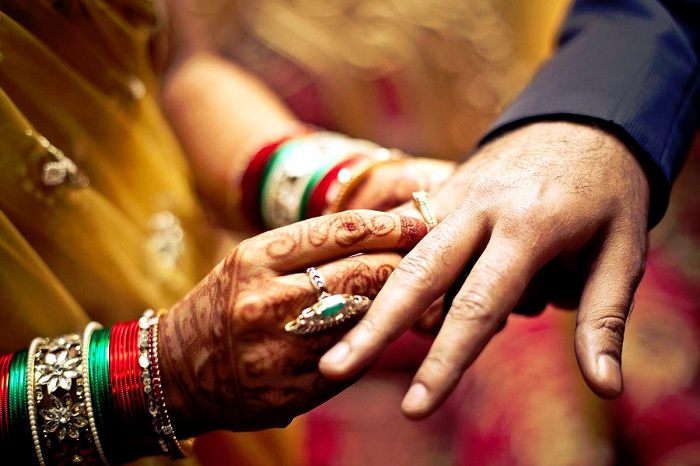
It is a conventional function in which bride and groom exchange rings. The ceremony indicates the official engagement between the couple. The ritual involves visiting of both the families along with the bride and the groom to each other’s house with shagun. Shagun is a symbol of gifts in the form of jewellery, clothes, dry fruits and sweets.
Check this also Gujrati Wedding Rituals
Next follows up the haldi kutai ceremony after the engagement. There can or cannot be a long gap between both the rituals. In Haldi Kutai, the married women from the groom’s side beat the ground turmeric to make a batter or a paste while singing the folk songs on Bihar. The paste is later sent to the bride for applying on her body on the Haldi ceremony.
Tilak
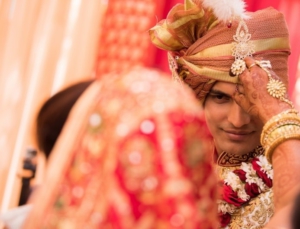
This is the formal declaration of the marriage. It represents that the relation has officially been accepted by both the families. The bride’s brother visits groom’s home with a vermillion plate of Tilak thaal. In this ritual, the brother of the bride applies Tilak on the groom’s forehead and gifts him Haldi paste (made by the bride’s mother) and clothes and accessories that the groom is supposed to wear on the wedding day. It is followed by a grand dinner after which the groom’s parent see off the bride’s brother with Gold Nath (nosewear), Bridal clothes and Mang Tikka (headwear) which the bride is supposed to be wearing on the wedding day.
Check this also Sikh Wedding Rituals
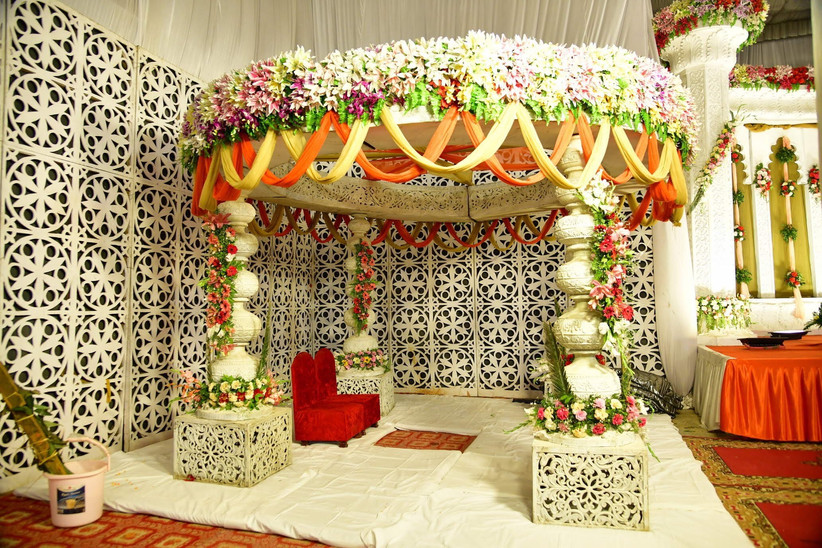
This ritual witnesses the setting up of the mandappa(wedding shelter) under which the weding will be executed. The mandappa is made with Bamboo wood on the four sides and is ornamented with mango leaves. It is also decorated with the banana trees.
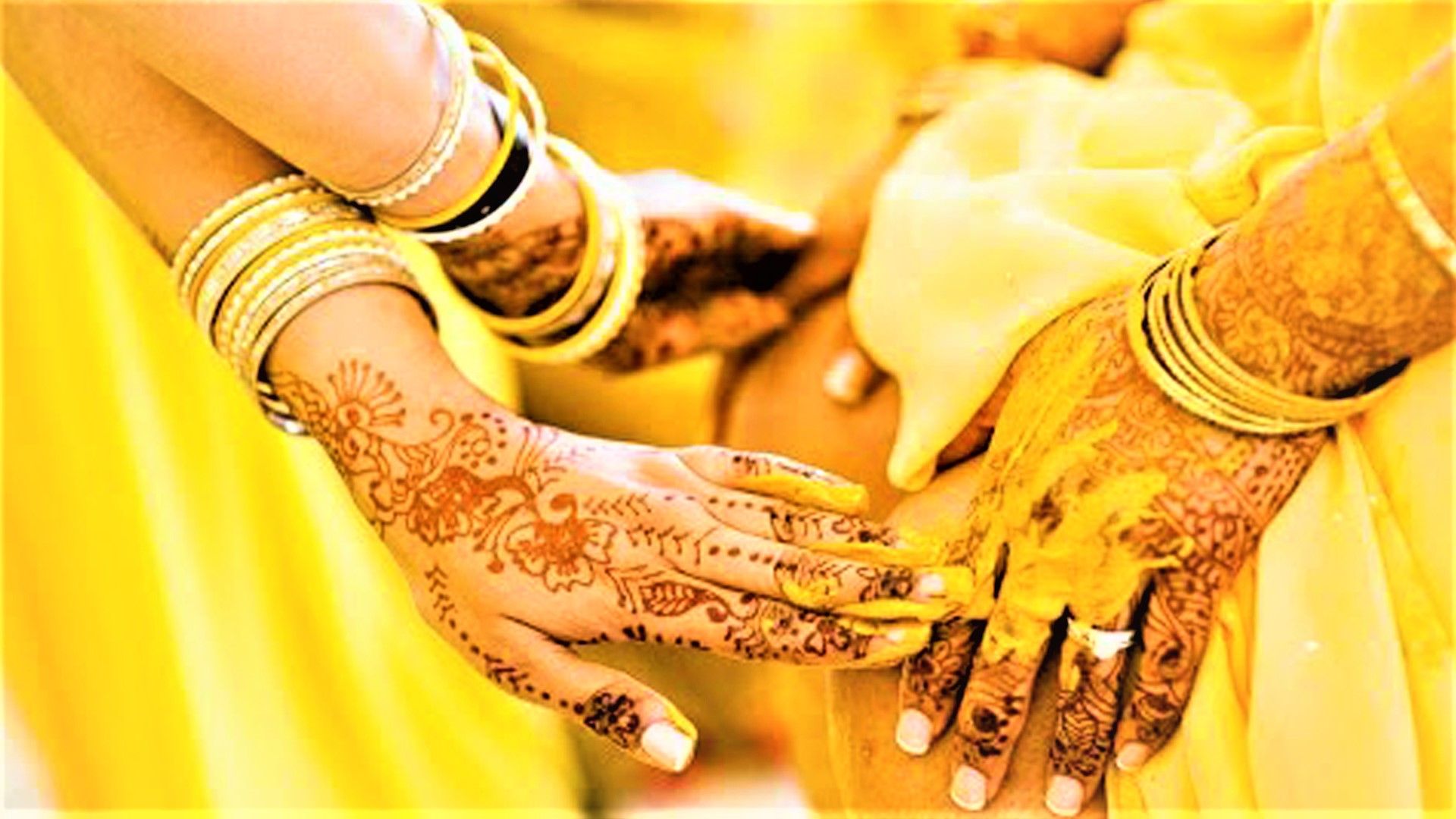
Both the families celebrate Haldi applying on the bride’s and groom’s families. The friends and relatives spear haldi on each other and play with colors to signify the happiness that the alliance has brought to them.
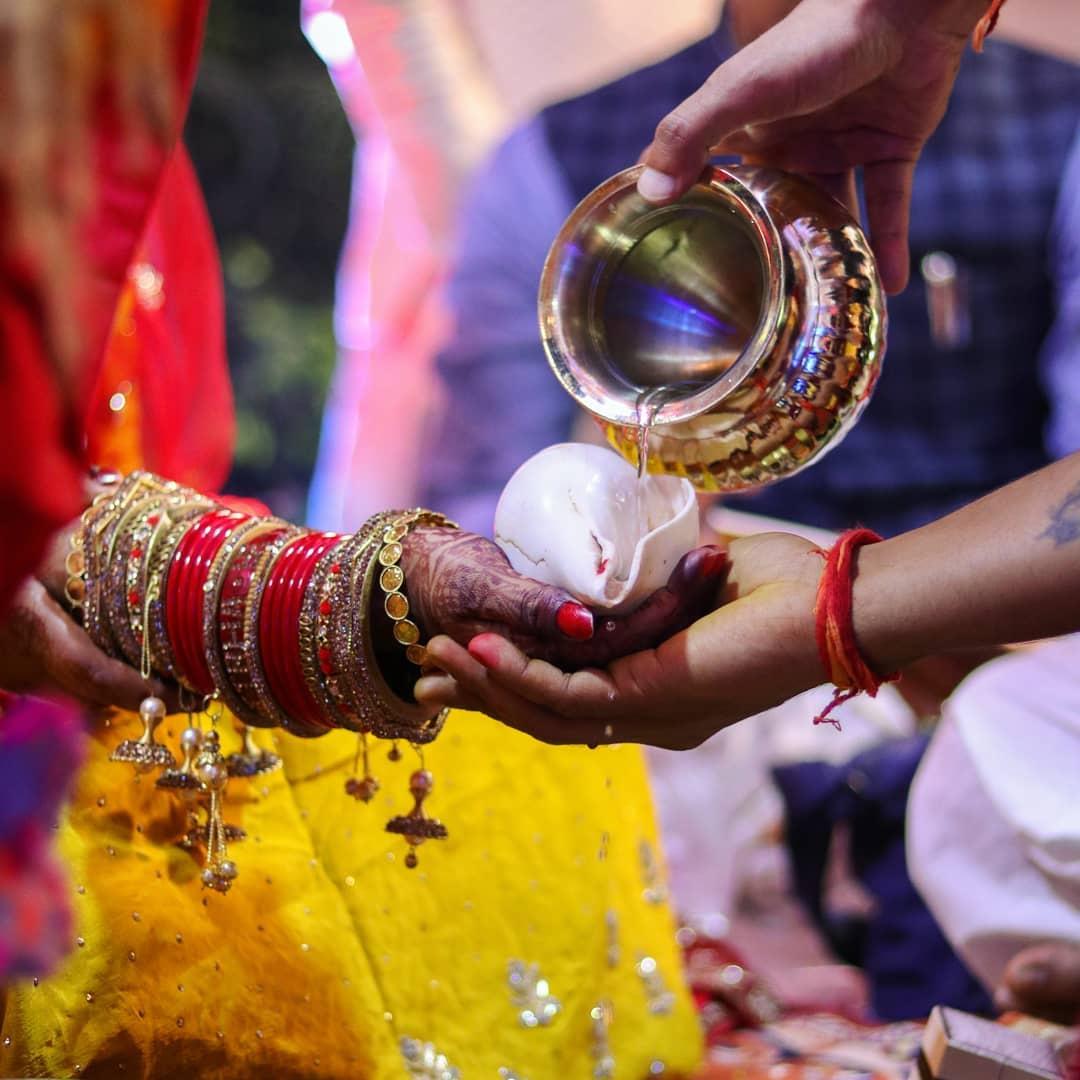
This is one among the most auspicious rituals that is carried out before the wedding. The parents of both the groom and the bride participate in the Pooja. It is to seek blessings from the bygone ancestors and the elders of the family. Clothes and money is offered to the ancestors and also to the Father’s sister’s children (niece and nephew) which is known as Paunpooji or Pairpoojan.
Check this also The Manipuri Wedding Rituals
As named, the ceremony sees the rice grinding ritual on the morning of the wedding. It is done by the groom’s mother on a silbatta. She ties the rice on her chunni/pallu and grinds it manually. Next is Imli Ghutai, is done by the groom’s maternal uncle to shove away the veil eye or the burinazar. In this ritual, the groom’s uncle offers betel nut to the groom. The groom places the nut between his teeth and it is thenafter consumed by the groom’s mother.
Check this also Kashmiri Rituals Muslim Wedding

The day finally sets off to start with a ritual where groom’s mother performs the Aarti or Paricchavan for the groom. It is conducted before the Barati takes off. During the Paricchavan ritual, the mother of the groom applies on the forehead of the groom and prays for the successful wedding and happy married life of the couple.
The Baraat includes brothers, sisters and the family of the groom. They leave for the bride’s home. The groom’s conveyance is decorated with flowers, specifically roses. Firecrackers, dance and music follows the way. Once the Baraati, typically the groom’s side reaches the venue of the marriage, they are welcomed by the bride’s parents with garlands of marigold and sweets.
Check this also Kashmiri Rituals Hindu Pandit Weddings
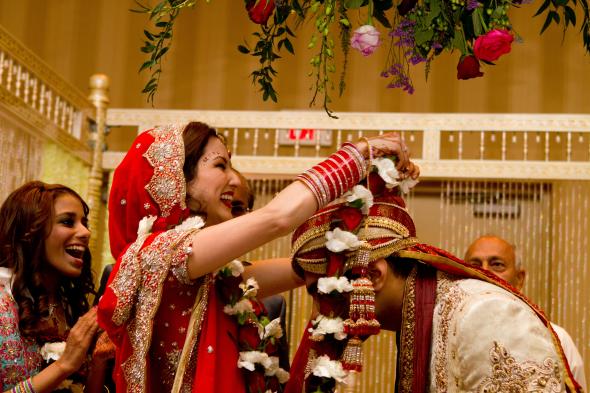
Jaimala is the traditional ritual in which groom and bride exchange the flower garlands at the Mandap. It is followed by Galsedi in which the bride’s mother and other married women burn the betel leaves in a lamp and smear it on the face of the groom.

In kanganabandhana, the priest carrying on the wedding ties the bracelets made up of cotton thread, colourful rice, mango leaves, money and haldi on the right hands of both the couple. A barber then chops off the toenails and fingernails of the couple right there. It is followed by Kanyadaan where th bride’s parents give her daughter to the groom.
Check this also Bengali Wedding Rituals
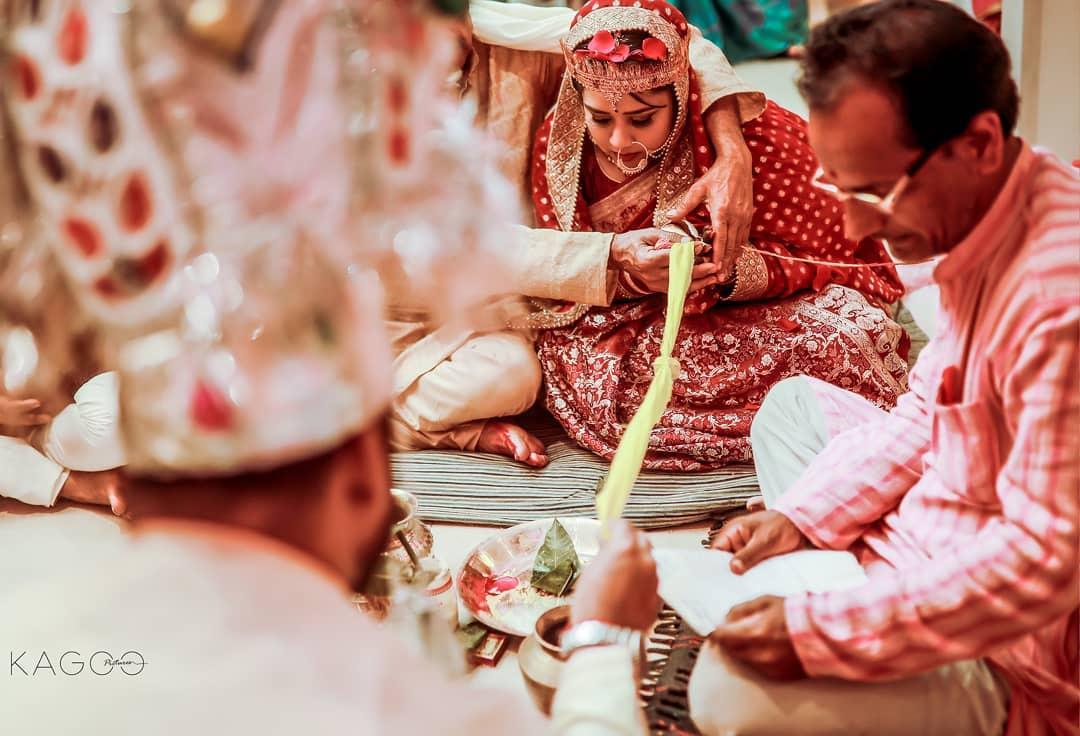
Bhaisur, the elder brother of the groom and the father-in-law of the bride i.e. groom’s father gifts saree, jewellery and lehenga to the bride. The legacy of passing onto the family jewellery to the bride happens here.

Finally, the bride and the groom offer their prayers to the family deity or the Kuldevata and the Marriage Phera are done around the sacred fire. Rice with husk is served to the fire at the Mandapa and the wedding sees its completion.

The elders of both the families shower gifts and cash on the groom in the celebration of completion of the wedding. The brothers of the bride escort the bride and the groom to the decorated car after which the bride takes the bride to his home. This ritual is called as salami and Vidaai.
Check this also Buddhist Wedding Rituals
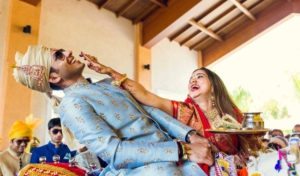
On reaching the groom’s home, the newly wedded couple is welcomed with the Aarti or the Swaagat Aarti. Flowers and rice are showered upon them. Weddings in Bihar see a sacred tradition here where along with the vessel filled with rice, a plate of Alta (crimson coloured liquid) is placed at the entrance by the groom’s mother. The bride then spills the vessel and walks through the Alta plate all the way into her new house to signify the good omens she is bringing along with her.
Check this also Nepali Wedding Rituals
It is a ritual in which the bride gets shagun and gifts from the elders and the relatives of the groom. It is a sort of welcoming ritual. Bride gets appreciated after the relatives, friends and family finally gets to see the bride and accepts her as a part of their family.
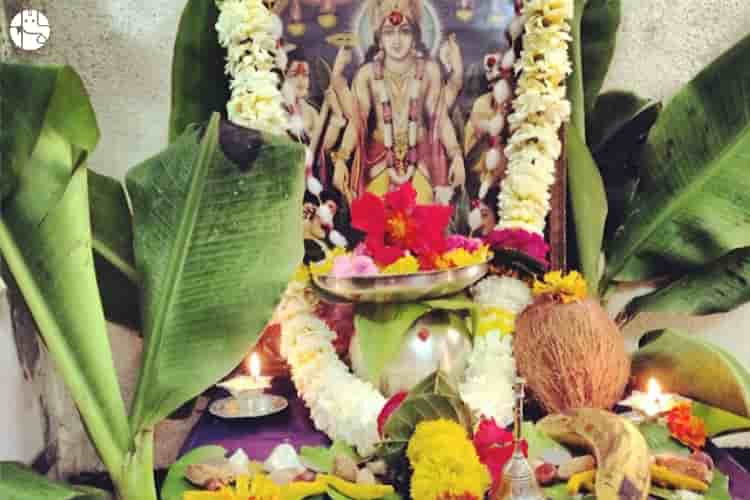
A satya narayan katha is held at the groom’s house for thanking the Lord Vishnu for the trouble free completion of the wedding. Couple offers their patronage to the Lord satyanarayan and pray for a prosper life.

This ritual is the bride’s first in the kitchen. This is symbolic to the bride finally taking up the responsibility of the house. The bride is to cook five dishes for the family along with the sweet dishes. Once the meal is done, the elders shower the bride with gifts and money. This ritual marks the official end of a Bihari wedding.
The rush and the celebration finally end, and the family members embrace the bond of the newly wedded couple and wish them good luck in their married life.
Also Read: Best Bihari Wedding Songs